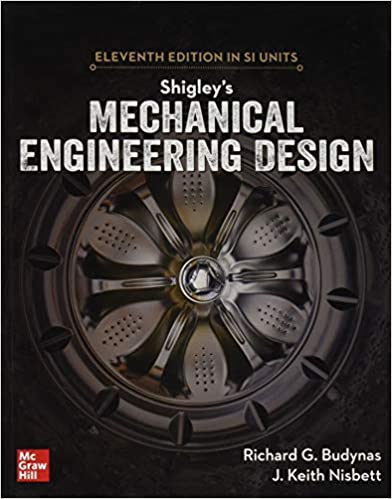(eBook PDF) Shigley’s Mechanical Engineering design in SI Units 11th Edition
$50.00 Original price was: $50.00.$35.00Current price is: $35.00.
(eBook PDF) Shigley’s Mechanical Engineering design in SI Units 11th Edition – Instant Download
(eBook PDF) Shigley’s Mechanical Engineering design in SI Units 11th Edition – Digital Ebook – Instant Delivery Download

product details:
- ISBN-10 : 9813158980
- ISBN-13 : 978-9813158986
- Author: Richard G. Budynas, Keith J. Nisbett
Shigley’s Mechanical Engineering Design isintended for students beginning the study of mechanical engineering design.Students will find that the text inherently directs them into familiarity withboth the basics of design decisions and the standards of industrial components.It combines the straightforward focus on fundamentals that instructors havecome to expect with a modern emphasis on design and new applications. Thisedition maintains the well-designed approach that has made this book thestandard in machine design for nearly 50 years. McGraw Hill Education’s Connectis also available as an optional add on item. Connect is the only integratedlearning system that empowers students by continuously adapting to deliverprecisely what they need when they need it how they need it so that class timeis more effective. Connect allows the professor to assign homework quizzes andtests easily and automatically grades and records the scores of the student’swork. Problems are randomized to prevent sharing of answers an may also have a”multi-step solution” which helps move the students’ learning alongif they experience difficulty.
table of contents:
Part 1 – Basics
1) Introduction to Mechanical Engineering Design
2) Materials
3) Load and Stress Analysis
4) Deflection and Stiffness
Part 2 – Failure Prevention
5) Failures Resulting from Static Loading
6) Fatigue Failure Resulting from Variable Loading
Part 3 – Design of Mechanical Elements
7) Shafts and Shaft Components
8) Screws, Fasteners, and the Design of Nonpermanent Joints
9) Welding, Bonding, and the Design of Permanent Joints
10) Mechanical Springs
11) Rolling-Contact Bearings
12) Lubrication and Journal Bearings
13) Gears – General
14) Spur and Helical Gears
15) Bevel and Worm Gears
16) Clutches, Brakes, Couplings and Flywheels
17) Flexible Mechanical Elements
18) Power Transmission Case Study
Part 4 – Special Topics
19) Finite-Element Analysis
20) Geometric Dimensioning and Tolerancing
people also search:
You may also like…
Engineering
Shigley’s Mechanical Engineering Design (11th Ed.) 11th Edition Richard Budynas – eBook PDF
Engineering - Industrial Engineering & Materials Science
Manufacturing Processes for Engineering Materials in SI Units, 6th Edition – eBook PDF
Engineering - Mechanical Engineering & Dynamics
Engineering
Shigley’s mechanical engineering design (11th Ed.) 11th Edition Richard G. Budynas – eBook PDF











